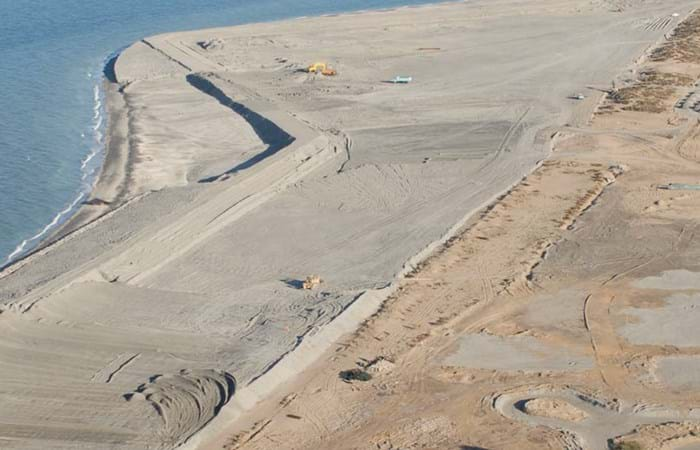Through Orascom, the Omani government is developing their tourist and real estate sector in order to diversify its economical drivers. The Wave, Muscat is the first freehold tourism and residential development to be launched in the Sultanate of Oman. The USD 805 million project will stretch along 7 kilometers (4.35 miles) of beachfront land overlooking the Gulf of Oman and covers an area of approximately 2.5 million square meters (26.9 million square feet). It is located in Muscat, Oman's capital city, about 5 kilometers (3.1 miles) from Muscat’s Seeb International Airport.
The project comprises reclamation of a platform and stockpile and the excavation of a marina basin and quay wall trenches for the development for freehold residential area and hotels. Boskalis Westminster (Oman) LLC has carried out the project in multiple phases, starting in March 2006. For the reclamation and excavation works, a number of Trailer Suction Hopper Dredgers (TSHD’s) and Backhoe Dredgers (BHD’s) were deployed. A total amount of 3,5 million m3 was needed for the reclamation of the platform and the stockpiles. The total volume for the excavation of the marina amounted to 230,000 m3, while the volume of the excavation of the breakwater and quay wall trenches amounted to 160,000 m3.
